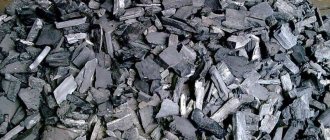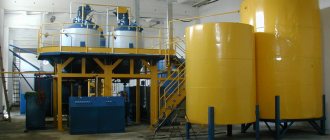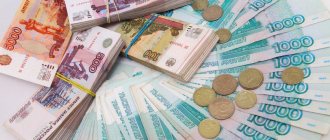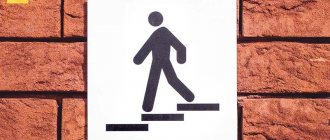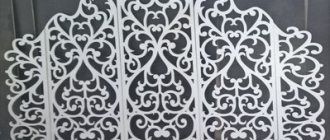Deciding on a niche - types of products
There are a huge number of types of mattresses that are in demand by different categories of consumers. The greatest demand among the population and private structures, for example, in the hotel business, are spring and springless orthopedic mattresses. The production of such products will require maximum investment, while ensuring a stable income. At the same time, an entrepreneur who does not have significant start-up capital can open an enterprise for the production of simple products with cotton or foam filling and sell them in wholesale quantities. Inexpensive products are readily purchased by military units, Russian Railways, construction companies for round-the-clock stay of workers on sites, kindergartens, boarding houses and other enterprises and institutions. A striking representative of this approach are Ivanovo textile manufacturers, known throughout the country.
Depending on the design, mattresses are divided into several large groups.
Spring mattresses
- With dependent Bonnel
. The coils of springs inside the mattress are intertwined, which ensures strength. However, when one spring is pressed, the others also react, so it is difficult to call such products orthopedic. - With independent Pocket
. The spring spirals here are combined in several units into blocks and each is placed separately in a fabric cover. The blocks work independently of each other, which provides high-quality support for the spine.
Springless
The products do not contain spring blocks. They can be the simplest - single-layer, or contain several layers. Cotton wool, foam rubber, latex, horsehair, seaweed and other materials are used as filler for the production of such mattresses.
Combined
These mattresses differ from multilayer mattresses in the presence of several zones with different characteristics. For example, on the one hand, a product can be soft and elastic, on the other – more rigid. There are also double models with different parameters on the right and left sides. Soft layers are made from latex, sheep wool, seaweed and foam rubber, hard layers are made from thermal felt, horsehair, coconut coir.
Children's mattresses
The main difference between children's mattresses and models for adults is their dimensions, corresponding to the standard sizes of children's beds. The filler here is most often struttofiber, polyurethane foam, natural latex and coconut coir.
Mattress covers
They come in different types - from regular quilted ones to products designed to level an old mattress or change its firmness characteristics.
Understanding what mattresses the new enterprise will produce will make it possible to provide for all the necessary nuances when writing a business plan.
Production development
The technology for producing mattresses depends on the design of the product.
Spring mattresses
Spring mattresses can be manufactured using two technologies. The first option is Bonnel. The block consists of springs interconnected, forming a single system. When one area of the block springs is acted upon, the entire structure comes into action. Such models are not classified as high-tech orthopedic products.
The second technology is Pocket. All springs are separated and placed in separate cases, fastened together with glue. This production technology is more expensive, but the orthopedic effect of mattresses is many orders of magnitude higher.
Springless mattresses
This type of product does not imply the use of springs in principle. Such mattresses can be either monoblock or multilayer. A variety of materials are used as fillers - synthetic and natural.
Combined mattresses
Combined mattresses have a more complex structure in contrast to multilayer springless ones. Thanks to combinations of materials with different characteristics, a manufacturer can create products with different stiffness zones:
- double-sided (hard on one side, medium-hard or moderate-soft on the other);
- with longitudinal zoning (double models using fillers of different hardness on each side - for couples with a large weight difference);
- with transverse zoning (from 3 to 15 zones).
Children's mattresses
The main differences between children's mattresses and adults' are the smaller size and quantity of fillers used, higher requirements for environmental friendliness, safety and quality. In models for newborns, more dense and rigid materials such as coconut coir, certain types of polyurethane foam and struttofiber are used as fillers.
Equipment for the production of mattresses
To make mattresses, you will need fairly large specialized equipment. The “working kit” should include devices of the following names:
- Industrial sewing machines (from 75 thousand rubles per unit).
- Industrial overlock machines (from 50 thousand rubles per unit).
- Machine for making covers (from 500 thousand rubles).
- Unit for making springs (from 2 million rubles).
- A device for connecting springs into blocks (from 700 thousand rubles).
- Press for molding and attaching frames to spring blocks (from 1 million rudders).
- Edging machine (from 300 thousand rubles).
Thus, only for the purchase of equipment it is necessary to budget about 5 million rubles with the expectation that, in addition to the above, the production will require hand tools and the organization of workplaces for employees.
Spring mattress blocks
Bonnel
(Bonnel) - dependent spring unit, contains about 130 springs per square meter. Each metal element works in conjunction with its neighbors, which significantly reduces the orthopedic properties of the mattress. The very first of the spring blocks, used in production to this day.
TFK (TFK)
- basic type of independent spring block. At this time, it has the highest popularity due to its affordable price and pronounced orthopedic characteristics. Each of the springs operates autonomously, the number of elements is 250 pieces per meter.
S1000
(Multipocket, Multipackage) - a more reinforced unit, it contains about 500 springs per bed. Ideal for couples with a difference in weight, as it optimally smoothes out the “wave effect” when sleepers roll towards each other.
S1200
(Multipocket) - a reinforced spring block, where the elements are installed in a checkerboard pattern (honeycomb) and have a more striking orthopedic effect. Most often, such a base is found in premium categories of mattresses.
S2000
(Mikropocket) - premium reinforced spring block. The number of springs per square meter is 1000 pieces. This type of unique orthopedic support is suitable for average-sized people and couples. The effect of rolling towards each other in sleep is minimized. Premium mattress base.
DS (Double Spring, Duet)
— “spring in spring” provides good support for people weighing 130-140 kg, as well as their couples. The principle of operation of the unit is based on the fact that each large spring contains a spring of a smaller diameter, and each of the elements works completely autonomously. This type of base is found in expensive premium mattresses.
Micro
— Micro (or mini) spring block is a spring of reduced height, about 10 cm. A fairly rigid base, which is used for children's mattresses and sofa cushions. Due to its rigidity, the orthopedic effect is average. We do not recommend using this type unless absolutely necessary.
Zone
- zonal spring blocks are widely popular and can have 3, 5, 7 and 9 support zones. The principle of distributing the load on the body is justified by the fact that each row of springs has its own stiffness, which increases from the area of the legs and neck to the lower back. Those. from areas of lower pressure to higher pressure.
Raw materials
It’s rare that a manufacturer limits itself to producing 2-3 models of mattresses. This is due to the fact that the modern consumer is already familiar with the features of the existing assortment and knows how to choose the best option for himself. Accordingly, the manufacturer needs to ensure that the product range includes products with different properties that can satisfy at least the most pressing customer needs in terms of rigidity, maximum weight, ability to retain heat and composition.
- Latex . Natural non-toxic material based on hyvea wood. Due to its flexibility, strength, durability, ability to quickly recover after pressure, it is widely used in the relevant industry. This may cause allergies. Artificial latex mattresses can be offered to vulnerable customers.
- Polyurethane foam (PPU). A more modern analogue of foam rubber. Typically used to create intermediate layers. Durable, hypoallergenic, inexpensive material.
- Memory effect materials . All of them are made on the basis of polyurethane foam, but, depending on the manufacturer, they may have different names - Tempur, Memory, Memory Form and the like. At room temperature, viscoelastic foam retains a stable shape, and when heated by the heat of the human body, it becomes softer, “adjusting” to the physiological characteristics of the owner.
- Struttofiber . Another analogue of foam rubber, the main advantages of which are the ability to retain heat for a long time, allow air to pass through and provide good support to the spine.
- Sheep's wool . Warm, pleasant to the touch, soft material with a healing effect, which is most often used either as part of multi-layer mattresses or as a “winter component” of double-sided covers. Not recommended for people prone to allergies.
- Thermal felt . This is sheep's wool with the addition of cotton and synthetic fibers, felted into a dense mass. In most cases, it is used to create a layer between spring blocks and the base filler to protect surfaces from abrasion.
- Coconut coir . Safe, durable natural material. Its peculiarity is its ability to repel moisture, so the products tolerate high humidity well. At the same time, the fiber is quite rigid and is used mainly in combination with other materials.
- Horse hair . Strong, elastic, durable hypoallergenic fiber, resistant to moisture.
Along with the listed materials, layers of bamboo, seaweed, camel and merino wool, compressed agave or banana leaves can be used in the production of Premium class mattresses. It is also practiced to impregnate products with hypoallergenic, fire-retardant and antiseptic compounds. As a rule, such models are intended for children, allergy sufferers and asthmatics.
To produce covers and mattress covers, an entrepreneur needs to arrange supplies of special fabrics and fillings. The front part of the products is most often made of jacquard, cotton, wool, terry and membrane fabric (microfiber), polyester, lyocell (it is obtained from cellulose) and textile knitwear. Top models of mattresses may have a surface made of Non-stress material - luxurious in appearance, pleasant to the touch and non-slip fabric. Foam rubber, padding polyester, holofiber, wool and other materials are used as filler for covers.
In addition, for the production of a full cycle, special high-strength threads, raw materials for vacuum packaging, tags and labels, as well as metal wire for the manufacture of springs will be required.
Raw materials for fillers, lining and packaging
As a rule, manufacturers do not limit themselves to producing one or two models of mattresses. Market conditions, competition, the consumer’s desire to see an assortment and have a choice require manufacturers to constantly expand. That is why a manufacturer who wants to remain in demand must develop, learning to work with various fillers in order to satisfy the needs of as many people as possible. To withstand competition, the manufacturer must be able to work with many modern materials, such as:
- artificial latex
- polyurethane foam
- memory foam
- struttofiber
- sheep wool
- thermal felt
- coconut fiber
Natural latex.
If the manufacturer wants to go further and create elite models, he will have to introduce the following fillers into the range
- horsehair
- bamboo fiber
- seaweed
- camel hair
- merino wool
- natural latex
To make your own covers, you need to understand fabrics. As for the external cladding, these could be:
Also, production cannot do without high-strength threads and raw materials for the manufacture of tags, tags and labels. If a manufacturer plans to produce spring mattresses, it cannot do without metal wire. To produce rolled mattresses, you will need raw materials and equipment for vacuum packaging of finished products.
GOST standards
In the Russian Federation, GOST standards have only just begun to be introduced, so there are few of them. Examples:
- GOST R 57770-2017 Orthopedic mattresses. Types and main parameters
- GOST R 57769-2017 Anti-decubitus mattresses and pillows. Types and main parameters
Examples of international foreign standards (German):
- UNI 10707-2003 Mattresses Mattresses – Test methods and requirements
- DIN VG 85100-2010 Mattresses and upholsteries – Technical specifications;
- UNI 11036-2003 Mattresses for children cots – Dimensional requirements, safety requirements and test methods;
Mattress manufacturing technology + Video on how to make them
The manufacturing process of any mattress begins with developing a model and drawing up a technological plan. Further, everything depends on the type to which this or that model belongs.
The production of spring-type products includes the following operations:
- Making a spring frame. For products with independent springs, an operation is added to pack the wound springs into separate bags made of non-woven material.
- Cutting and sewing (production) of woven and non-woven mattress elements
- Laying filler on the spring frame - latex, coconut fiber, etc.
- Laying and sewing the front layer of the product.
- Making a cover.
- Application of water-repellent, fire-resistant and other coatings (if provided by the model).
- Quality checking.
- Packing and sending to the warehouse.
Springless mattresses are multi-layer and monoblock. Monoblock products are most often made from latex by pouring foam into prepared molds. The porosity of the structure is ensured by means of special spikes. Multilayer mattresses are produced by combining several layers of materials with different properties. For example, coconut fiber is used to give latex rigidity. In some cases, it makes sense for an entrepreneur to use artificial latex instead of natural latex. This material is cheaper and makes it possible to produce products that are accessible to the general population.
How mattresses are made in production:
How everything works: “Dissecting” orthopedic mattresses
The workshop is a fairly spacious room where dozens of workers work. Everything is in one room, divided by large equipment into several parts - according to production stages.
This is what a mattress production workshop looks like.
There are a lot of mattresses in the workshop: here you can find lush, comfortable giants, one-and-a-half-beds, and modest single-beds. It’s tempting to lie down!
Stop. Now is the time to say that the thickness of mattresses depends on their composition. The more materials in the base, the higher the mattress (both in physical quantities and in class). For example, at the factory where we visited, they make six types of mattresses: “Comfort”, “Standard”, “Lux”, “Prestige”, as well as springless and children’s. The stages of their production are similar, the only difference is the materials. But first things first.
Creating spring blocks
The most important thing in a mattress is the spring blocks. It is with their creation that the “life” of each product begins. There are two types of spring blocks: independent and dependent (those double-cone springs that are shaped like an hourglass).
Dependent spring blocks have not been popular for a long time.
This system has long been considered outdated: although it is economical, its orthopedic properties are, to put it mildly, poorly developed. Resting on such mattresses is not so comfortable.
But more than 90% of mattresses are made from independent spring blocks.
The block is a collection of small cylindrical springs glued together. They are stamped by a machine: the operator is only required to monitor the correct operation of the machine.
Sergey Novozhentsev, machine operator.
“The machine turns ordinary wire into a spiral-shaped part,” says machine operator Sergei Novozhentsev. — The wound springs are placed in separate bags made of non-woven materials, packed in a cover, and then glued together.
The output is a string of covered springs - a kind of caterpillar. We call these parts “glasses” among ourselves.
Then the chains fall into the “hands” of the next machine, which then makes blocks from them, gluing together “cups”. The master makes sure that everything is according to the instructions. Around his workplace there are hundreds of white layers - ready-made spring blocks.
Here the destinies of future mattresses diverge: the blanks are filled with different toppers (materials) depending on what class of product is being conceived.
from 5 to 15 minutes (depending on the size of the mattress) to create one independent spring block.
cutting
A little about toppers. In ancient times, thousands of years ago, people filled cloth bags with grass, straw and leaves and slept like that. But the “filling” was completely natural. Modern mattresses also contain a natural component - coconut coir. This is a natural material made from compressed coconut fibers impregnated with natural latex.
Some mattress models also add struttofiber, thermal felt, knitwear, and polyurethane foam. The cover is most often jacquard fabric with voluminous stitching.
All these materials are supplied to the factory in huge layers. To ensure that they match the dimensions of the spring block, the master cuts them on a special machine.
The process of cutting the “filling”.
There is a cheat sheet hanging nearby: it contains the exact dimensions of the projects and the number of orders.
This is what the layers look like after cutting.
In fact, the employee’s entire day is spent at this machine. You put the layer on the table, cut it, take it to forming, and so on over and over again.
formation
Forming, one might say, is the most creative work here in the factory. The craftsman is brought already cut materials and a spring block, and his task is to connect them so that a harmonious parallelepiped is obtained.
Intermediate stage of work.
This is akin to cooking: you need to create an appetizing dish from raw ingredients. The modeling table is a kind of kitchen for “preparing” mattresses. It rotates, which makes the work of the craftsmen much easier.
Shaper's workplace.
“We work with our hands and eyes,” says molder Viktor Kovalev. “It’s not enough to just adjust the parts to a certain size—you have to do it with taste.” Nothing should stick out. To be sure, we work on one mattress together at the same time: someone does the main work, someone supervises. On average, one mattress takes 20 minutes.
For convenience, the masters work in pairs on shaping.
Having made sure that the materials and springs are “in an ideal pair,” the craftsmen consolidate the result. It must be said that gluing is a jewelry job: any careless movement of the glue gun can ruin the product.
plating
And now the formation is completed. The product has already acquired the shape of a mattress: the final but extremely important touches remain. We head towards some interesting equipment - a huge loom equipped with several dozen spools of white thread.
Below, where the mechanisms work, you can see rolls of various fabrics.
- What are they for? - I ask. – Do you really need so many layers for the cladding?
“This increases the service life,” says factory employee Inna Sharipova. — Look: all layers automatically become one and are held together. Previously, the process was carried out by people: imagine how much time it took! Now everything is simpler - you just need to make sure that the threads and material do not get tangled.
After modeling, the mattress ends up right here - in the sewing area. First of all, he goes through the stitching stage: the machine applies three layers of fabric to our “bare” parallelepiped.
Employees put rolls into the machine - first spunbond, then padding polyester, and on top - upholstery material. It is in this sequence that the fabrics are applied to the mattress.
Workshop employees change fabric rolls themselves. Just like threads.
On the belt, the already beautiful, “dressed” mattress goes to the seamstresses.
edging
Seamstresses finish the mattress. They work on edging machines - devices that vaguely resemble huge microscopes.
The mattress is placed on the table, all the fabrics are spread out on it, the product is clamped with the “paw” of the machine and the button is pressed.
And then small sides automatically appear on the mattress.
All that's left to do is pack!
package
The packaging is also done by machine.
A label indicating the class, composition and date of manufacture of the mattress is affixed to the film.
That's it, the product is ready! Mattresses are shipped from the factory and sent to stores.
Pleasant dreams!
numbers
115 mattresses - this is how much the Tula factory produces on average per day.
60 minutes - approximately the same amount of time it takes to make a medium-sized mattress.
13.5 cm is the height of a standard spring block.
256-330 springs per sq. m is the density of standard mattresses.
At least 10 years is the service life of most spring mattresses.
We thank the Modern Furniture Factory for their assistance in preparing the material.
Gallery
show all photos
Business profitability
Most market participants are skeptical about new manufacturers. Accordingly, at the initial stage you should not count on super sales. It is worth starting the search for sales channels for mattresses at the stage of organizing production, disseminating information about the appearance of a new product as widely as possible.
It should be remembered that in order to confirm the quality of products of a new brand, it is necessary to prepare samples and send them to representatives of large networks specializing in the sale of bedding, as well as furniture factories. To independently sell mattresses, you should consider opening an online store, your own outlet in a shopping center, or even a full-fledged salon. It all depends on the size of the starting capital. A good help in promoting a new brand will be the production of custom-made products based on the individual requirements of the client, as well as the production and sale of accessories - mattress covers, covers, etc.
As for business profitability, mid-price mattresses are sold for 4-8 thousand rubles per unit, products with independent spring blocks cost from 15-20 thousand rubles, premium products - about 50 thousand rubles per unit. Revenue will depend on production volumes and the approach to product sales.
On average, the profitability of the corresponding business is within 30%, and under favorable circumstances, investments pay off in 2.5-3 years.
Opening a mattress production company
Russia is one of the countries with great prospects in the production and sales of mattresses and spring blocks. The wide range of products and the popularization of orthopedic mattresses provide many ways to market the products. For more information about the production technology and technical equipment of the workshop, read the article “Equipment for the production of mattresses.”
The content of the article:
- What types of mattresses are there?
- Workshop setup
- Selection of raw materials
- Manufacturing process
- Estimated Costs and Revenues
- Other profitable productions
Register your business as a limited liability company (LLC). In addition, you need a product quality certificate according to ISO9001 standard.
What types of mattresses are there?
The development of an enterprise depends on sales, and those depend on the product range.
Start implementing your business plan by manufacturing all possible types of products at once. Keep an eye on product quality and new manufacturing technologies; for example, they are now producing models for different weights. Mattresses are:
- spring: dependent spring block (double-cone springs fastened together by a frame);
- independent spring block (here each spring is inside a separate bag, which is why there is no creaking; this includes the production of orthopedic mattresses);
- springless (differ in their filler).
The production of spring blocks is an integral part of our business plan for the production of mattresses. All spring blocks have varying degrees of stiffness.
Market Review
When drawing up a business plan for the production of mattresses, we conduct marketing research. They show a constant increase in buyers in this area, especially in cities remote from Moscow.
The products fall directly into 2 price segments: medium and premium. Sold in large volumes every year. Experts note that high demand for products is ensured by the popularization of a healthy lifestyle, including healthy sleep.
This is a rapidly growing business in Russia. The largest enterprises are located in the following areas:
- Moscow;
- Ivanovskaya;
- Vladimirskaya.
In Russia, 59 factories are engaged in this business. Business sales are carried out not only in the departments of furniture stores, but also in recently opened highly specialized stores and online stores.
Workshop setup
The mattress manufacturing business requires specially trained workers.
Knowledge of mechanics and orthopedics is required. Shop
When implementing a business plan for the production of mattresses, select a building for a workshop with a size of 150 square meters. m, plus warehouse. All premises must meet production conditions: appropriate lighting, water supply, sewerage, heating, exhaust.
Consider the option of renting suitable premises at an existing enterprise.
Equipment
Production lines can be purchased or rented. More popular used equipment for the production of mattresses.
For the minimum configuration you need:
- automatic machine for making independent springs;
- digital machine for fastening springs;
- industrial sewing machine;
- edging machine;
- overlock
Selection of raw materials
1. Filler materials
They can be very different and are used depending on the desired result:
- latex;
- viscoelastic foam (for more expensive models);
- perforated latex (well suited for the springless version) is a natural material with a porous air structure with micro-cells, which is obtained by foaming the extract of the sap of the Hevea tree. It is airtight, soft, elastic, follows the contours of the body;
- thermal felt - obtained by mixing synthetic, wool and cotton fibers. Used as an insulating layer, it does not allow the springs to get closer to the soft filler and makes the product more elastic;
- coconut fiber (for hard products) – a natural material made from steamed coconut shells impregnated with latex;
- polyurethane foam is an elastic synthetic material filled with thin-walled air cells.
2. Materials for cases
Choose durable fabrics that are not afraid of constant friction and heavy load.
Typically used:
- jacquard is a durable fabric, does not stretch, washes well, does not fade;
- natural cotton;
- woolen fabrics;
- textile knitwear.
Winter-summer covers are becoming popular for implementing the idea: one side is made of woolen fabric, the other is made of light fabric.
Purchase all these materials in bulk.
Manufacturing process
The mattress production line is based on the use of conveyors. Nowadays manual labor is rarely used. Handmade products are now considered premium products and are very expensive.
Engage in the production of medium-cost products.
Manufacturing stages:
- Production of springs for the base of the product (or purchase of ready-made spring blocks) from high-carbon durable steel;
- Selection and arrangement of product filler;
- Covering with a cover.
Video: RollMattress - production and sale of anatomical mattresses
Estimated Costs and Revenues
The cost of equipment depends on the newness of the models and the manufacturer.
Used equipment:
- machine for stitching spring blocks (manufactured in 2000) – 150,000 rubles;
- edging machine – RUB 200,000.
New equipment:
- edging machine (Taiwan) – RUB 380,000;
- machine for sewing on zippers (Spain) – RUB 1,180,000;
- overlock for mattresses (Spain) – RUB 350,000.
For better product quality and saving money on repairs (about 5 years), buy new equipment.
The cost of high-quality raw materials is about 300 rubles. per kg depending on the type of material and supplier.
Retail cost of mattresses:
| Type of mattress | Cost, rub. |
| Based on polyurethane foam | 3 000 — 9 000 |
| With independent spring block | 10 000 — 25 000 |
| Premium class | 25 000 — 50 000 |
| Exclusive models | from 50 000 |
Business profitability – 25%
Business payback – 6 months
Other profitable productions
1. Business plan for the production and sale of furniture. You can organize a business with any starting capital. Simply choose one of the 3 process groups that suits your budget.
2. We open a parquet production workshop. This business idea is now taking off. Profitability reaches 20%. Find out how to open your own factory in the shortest possible time.
3. We are engaged in the production of wallpaper. In this business, the existing assortment does not satisfy customers, so it makes sense to occupy this niche. Payback – up to 2 years.
Documentation of the enterprise
To open a large-scale production of mattresses that can generate a stable income, you will need to register a legal entity (LLC or its equivalent in your country). Large market players are not inclined to cooperate with, so you need to play by their rules.
At the initial stage, it makes sense to choose a simplified taxation system. In this case, the entrepreneur has two options for paying taxes: 15% of the difference between expenses and profit received or 6% of income.
In the Russian Federation, when registering a mattress production business, the OKVED code 31.03 is indicated.
To launch production facilities, permits from the SES and fire departments will be required. In addition, you will need to obtain a certificate confirming the quality of the product being manufactured.
Individual consumers and business representatives pay attention not only to the characteristics of goods, but also to technological processes. In particular, it is desirable over time to bring activities into compliance with the international quality management system ISO 9001:2000.
Selecting a room
Considering the large dimensions of the mattresses and the equipment used in their production, the workshop area should be at least 150 m², including warehouse space. The premises must comply with labor legislation, the requirements of the SES and fire departments, and also contain all necessary communications, including an electrical network and a high-quality ventilation system.
The internal space must be zoned, providing the following blocks:
- direct production workshop;
- warehouses for raw materials and finished products;
- office part;
- sanitary facilities and staff area.
The cost of renting a structure depends on the location in relation to the city limits, region, state of communications and other factors.
Recruitment
The number of employees who will be directly involved in the production of products depends on the scale of production. To service the technological cycle for the production of mattresses with spring blocks, you will need: an operator of a machine for the production of springs and several seamstresses who will be involved in cutting, manufacturing individual elements and assembling products.
The key role in production is given to the technologist, whose functions include product development and monitoring the compliance of the technological cycle with established requirements. In addition, you will need to hire an accountant, a sales manager, staff to maintain the company's website and retail outlets (if any), security guards, loaders, a cleaner and a truck driver who will deliver goods to the consumer.
Largest mattress manufacturers
To get an idea of the state of the mattress industry, it’s a good idea to get acquainted with the leaders of the domestic market. The following manufacturers are engaged in this type of activity on a large scale:
- Askona (Kovrov, Vladimir region) is the largest Russian manufacturer of mattresses, maintaining partnerships with large textile companies from around the world. The company's product range includes over 150 models of orthopedic mattresses.
- Consul (Moscow, Moscow region) is the oldest domestic manufacturer of bedding, owning more than 140 retail points in the capital alone.
- "Toris" (Murom, Vladimir region) - the company entered the market in 1992. Specializes in the production of two series of mattresses, mainly latex-based.
- "Ormatek" (Kokhma, Ivanovo region) - has been on the market since 2001, specializing in the production of a wide range of mattresses with various properties. The products are distinguished by their affordable price and excellent consumer qualities.
Also worthy of attention are such manufacturers as Altesse, Aistenok, Comfort Line, DonSon, Dream Line, Latrix, Lonax, Luntek, Promtex-Orient, RollMatratze, Promtex-Orient, RollMatratze.

